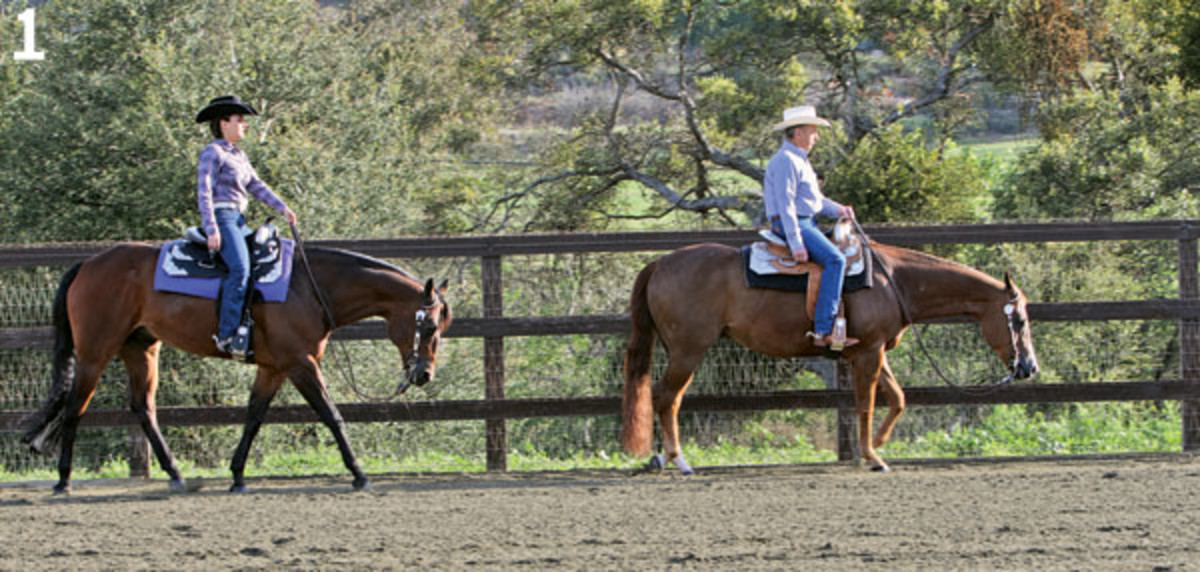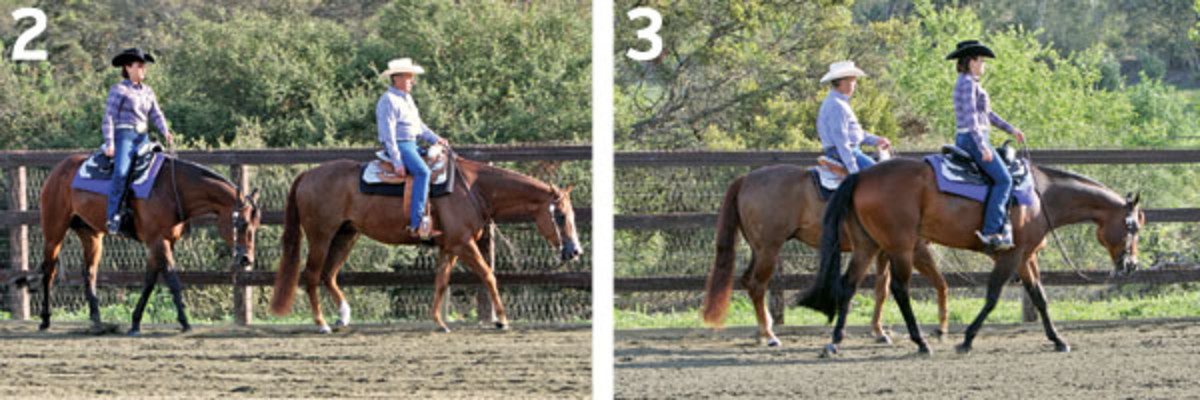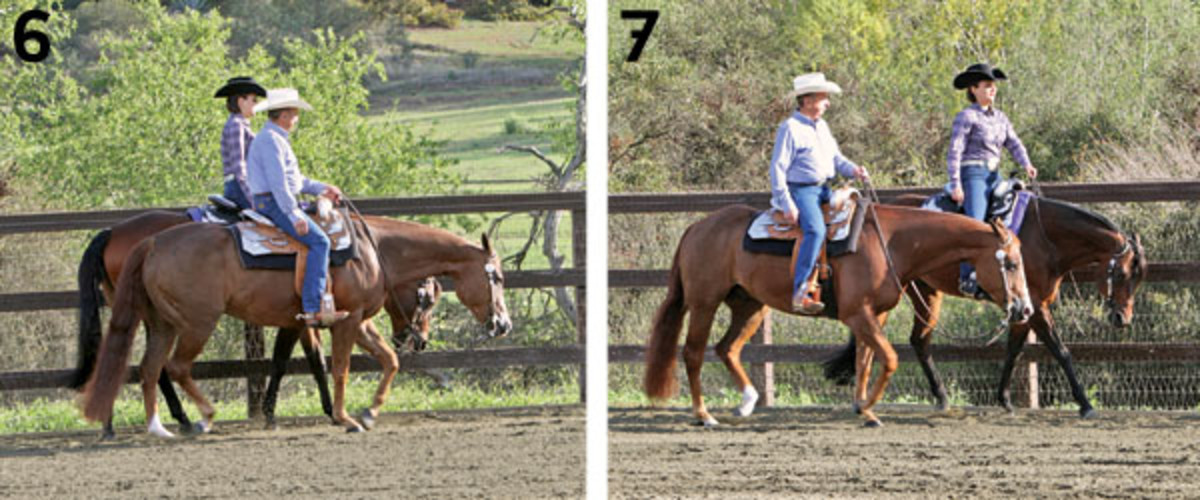For any class with rail work, passing a horse (or being passed) is a fact of life. While passing can’t be held against you on the judge’s card, the manner in which you pass and your horse’s demeanor when you pass (or are being passed) can influence your placing in the class.
Here I’ll cover the proper and safe way to pass another horse on the rail, as well as point out a few common mistakes I see in amateur-class rail work. Even if you don’t show, you can benefit from this knowledge and use it when passing another horse on a trail, for example. The safety and common-courtesy tips I’ll share here are universal to all aspects of riding.
1. Passing is all about timing and spacing—getting the proper timing when moving off the rail, maintaining appropriate spacing between the two horses when they’re parallel during the pass, and correct timing for moving back to the rail. The bay horse is gaining on the sorrel horse in front, so the bay’s rider begins to push her horse off the rail about 10 feet behind the sorrel. To smoothly move off the rail while maintaining a consistent speed and body position, she uses her outside leg and slightly moves her rein hand toward the right to guide her horse. She doesn’t rush, but she’s efficient.

2. Compared to Photo 1, the bay horse is much too close to the sorrel horse’s hind end. Running up a horse’s hindquarters like this could lead to a kicking situation, which endangers both riders and could lead to penalties or a disqualification for one or both riders. Riding up this close before passing also makes it harder for the passing rider to keep her horse in position and at a consistent speed, because to avoid a collision, her horse will have to break gait or dive off the rail and drop his shoulder to get around the horse in front.

3. Back to a correct pass, as the pair of horses travels parallel down the rail, the bay is about one horse length away from the sorrel. This keeps the horses out of each other’s personal space, helping to avoid biting or other dangerous behaviors and the ensuing penalties. If the bay’s rider took him on a path farther from the sorrel, closer to the center of the arena, it’d just extend her time off the rail unnecessarily—the judge is looking for efficiency here. This correct position allows an efficient and safe pass.
4. Here’s good perspective of the proper distance between horses during a pass. The horses have enough space to not be threatened by each other. The passing rider guides her horse on the shortest path possible to get back on the rail, without encroaching on the sorrel and his rider.

5. Once she’s two horse lengths in front of the sorrel horse, the passing rider quietly guides her horse back to the rail using pressure from her inside leg and by moving her rein hand toward the rail. She can keep track of her position with a subtle glance at the rail horse’s position, but she shouldn’t stare at or focus on the other horse so intently that she loses track of her own horse.
. This time the rider on the sorrel passes the bay too closely on the parallel plane. Right here, the bay could kick out at the sorrel as he passes and catch either the horse or the rider.

7. As the rider continues on his too-close track, you can see tension building between the pair of horses. The bay’s expression has turned nasty, and the sorrel isn’t happy about being in this position either. This position leads to obnoxious, disobedient behavior on the part of both horses, which could lead to penalties or disqualification of one or both horses. To avoid “arena road rage” that can be caused by improper, unsafe passing, always be mindful of the other horses in front of and behind you on the rail, and aim for a swift, safe pass, with plenty of distance between the horses in all phases.
Jill Newcomb, San Marcos, California, is a lifelong horsewoman and an AQHA judge. She specializes in all-around events and has successfully coached and shown world champions and All American Quarter Horse Congress winners. Learn more about Newcomb’s program at jillnewcomb.com.






